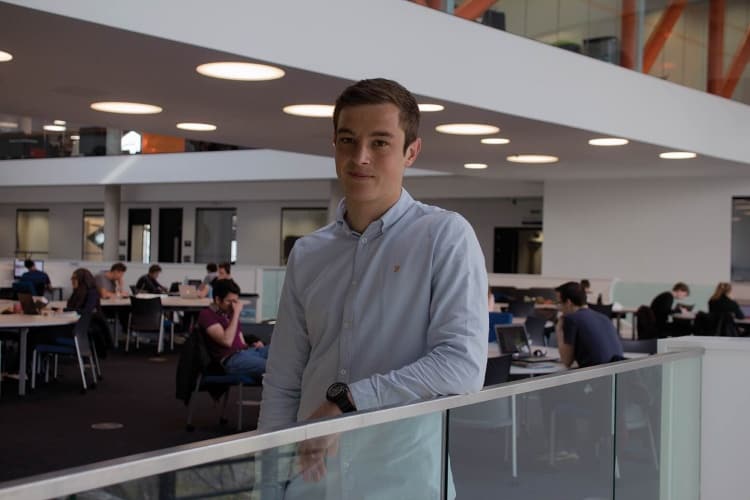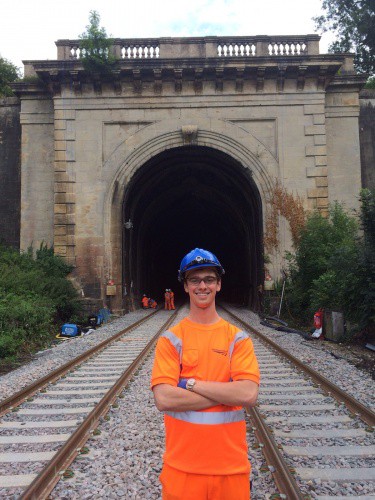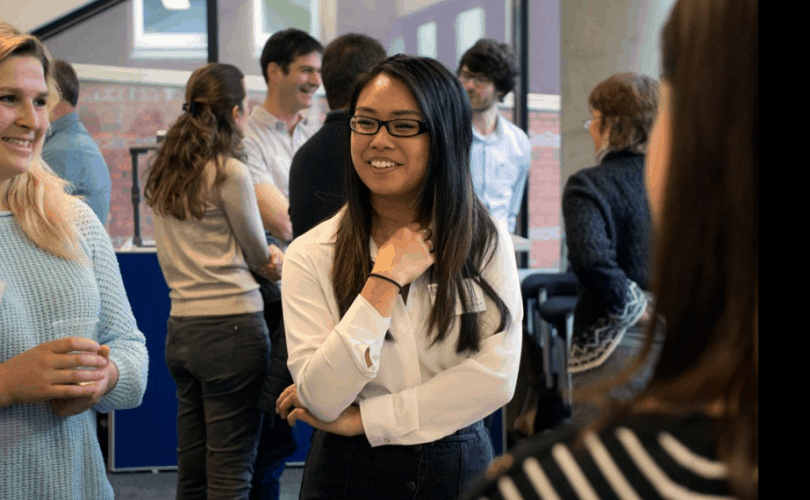The extracurricular programme has been running since 2014 and is designed to equip graduates to take on leadership roles and create a positive impact in research and industry. This year’s cohort have been applying systems thinking to look at the UK’s energy landscape in a project exploring how to decarbonise the country’s energy system. The Student Engineer caught up with two of those involved, Jake Brown and James Featherstone, to find out about the scheme.
What degrees are you studying?
Jake Brown: Mechanical Engineering with a Year in Industry
James Featherstone: MEng Civil Engineering

What led you to study engineering?
JB: I always enjoyed maths and science at school. I also enjoyed problem solving and working in teams and engineering combined all of these things. I specifically chose mechanical because it covered a broad range of topics and I wasn’t completely sure what I wanted to specialise in, mechanical allowed me to keep my options open.
JF: For me, engineering allowed a real-world application of the maths and physics I'd learnt at school. Civil engineering, more specifically, was the career path I chose to follow because I wanted to be able to look back over my career and see a physical legacy of projects in which I had been involved. Being able to look at interesting structures and challenging civil engineering solutions in the future, and to say "I built that" is still what drives me today. I've been lucky enough to work on some fantastic, large-scale civil engineering projects during my summer placements and these experiences have further affirmed to me that engineering is the path I want to pursue.
Why did you want to join SELA?
JF: SELA provided a brilliant opportunity to learn new skills, work in a group of similarly driven engineers of the future and meet some extremely high profile leaders from industry. Since we were the inaugural cohort it was partly up to us what SELA became, which became evident as it organically grew and developed. SELA is very good at providing parameters within which we can work, but allowing creativity and a very large scope of potential solutions.
JB: I realised it was getting more and more competitive to secure placements and SELA would give me the training and exposure to certain individuals that would allow me to separate myself from my peers. I also felt I had the skill set that matched the SELA attributes and I could help the scheme grow and contribute in a positive way.
What did you learn from the 2nd year projects that you were involved with?
JB: That there is more to engineering than just having a good technical solution. It needs to make financial, social and political sense and unless it fits all these criteria it doesn’t matter how good the idea is it won’t be successful.
Also it is important to be able to influence those around you and be able to convince them in your idea and allow them to see the bigger picture.
JF: The main learning point for me personally was thinking about a network rather than one or two specific subjects. The causality within a system became evident, and the complexity of issues such as energy were highlighted increasingly as we continued to explore the topic. Also, a key conclusion from our project was that politics and public perception are key drivers in almost every project - two things which are the hardest to change as an engineer.

Was it a different experience than you were expecting?
JF: The first year of SELA raised challenges such as leadership and team organisation. Although this project had elements of both of these, it was more of a collaborative project, in which a lot of time was spent digesting and analysing the information presented to us. This was a new way of working which we weren’t used to. Unlike the first year project where there was a clear deliverable at the end of the year, this project could have taken many forms and allowed a good amount of controlled creativity.
JB: Yes, as I didn’t realise politics played such a huge part in whether energy engineering ideas are developed.
At what point did you realise how it would turn out?
JF: A few weeks before the final presentation of our findings and causal loop diagrams, when we still had talks lined up to further understand the hugely complex issue but hadn't started formalising our ideas and understanding was when I first fully understood the enormity of the task - trying to simplify the vast number of opinions, technologies and challenges into a comprehensive summary.
JB: If this question is referring to the project outcomes then after we spoke to Tim Yeo MP. After this, I realised that there is so much shuffling and changing of agendas at that level it is impossible to develop a standard strategy and actually implement it. It is too easy to just chop and change ideas and unless this is addressed, we will continue to drag our heels until it is too late.
What were the biggest challenges that you had to overcome?
JB: The biggest challenge was probably making sense of all the information between different viewpoints. Everyone was biased towards their tech and then it was challenging to decide which was actually the better solution.
JF: Condensing the vast amount of information that we had been presented with by the expert speakers, who often contradicted each other, and providing simple but thorough maps of the information and causal loops was the biggest challenge – of course, this was the whole task and was designed to be difficult.

Do you think projects like this should be incorporated into the broader engineering curriculum?
JB: Yes, as these are real life scenarios that you are likely to face when you graduate. The ability to understand business, politics and work within it, is key to having a successful career and exposure to this in your studies can only benefit you.
JF: I definitely think that projects like this should be commonplace on every engineering course. Multidisciplinary, long-term projects working on questions to which there are numerous 'correct' answers, with field leaders presenting their facts and personal opinions, proved to be greatly rewarding. Obviously, on such emotive topics as climate change and energy generation there are not only no right answers, but every solution is, by the project’s nature, very subjective. Other ‘wicked problems’ provide the same level of discussion and varied opinions. This means that the presentation and justification of the findings on projects like this are just as important as the solution itself.
Should all student engineers be learning about complex systemic problems, no matter what their discipline?
JB: Yes, as it brings together different ideas from different disciplines to give a holistic view of engineering in the real world. In the real world, engineering isn’t just mechanical or civil , it is also integrated with business, social and political aspects. So again this sort of exposure can only be a good thing.
JF: Engineering, by its very nature, involves complex interactions. To make it specific to civil engineering, possibly one of the engineering disciplines which isn’t thought of as a ‘system’ – a student may be able to design a column or a sewer network, for example, but everything in the real world involves system interactions. Buildings have civil, mechanical and electrical systems, just to name a few. Transport networks have vast amounts of smaller systems within a larger system. These interactions and thinking in terms of the implications of one alteration on the rest of a system/network is vital.





Glasgow trial explores AR cues for autonomous road safety
They've ploughed into a few vulnerable road users in the past. Making that less likely will make it spectacularly easy to stop the traffic for...